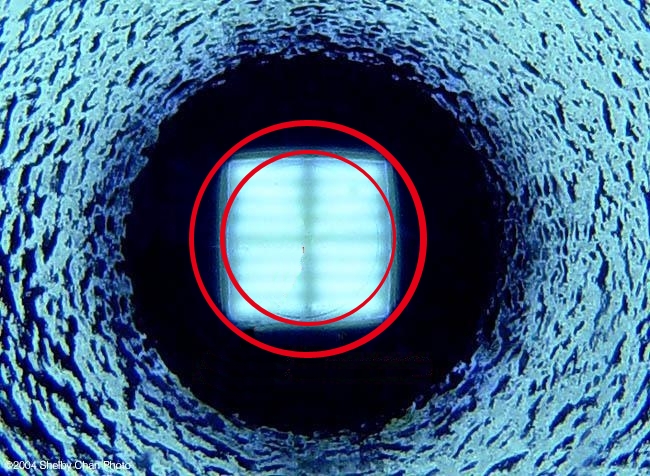Echo63,
I was originally of the same understanding as you but with further comment from others and consideration, I have come to believe the case is as I have stated. Playing with older LED's that had distinct color differences in the center beam and corona with an optic, I noticed the color difference swapped when the same LED was coupled with a reflector. An optic can be used to provide a focused image of the die, just take an acrylic ball to a LED or look at the beam pattern of the X200 for instance. If you take a perfectly smooth reflector, you don't get a focused projected image of the die, that is to say, the beam is not square like the case of the optic.
Actually now that I think about it, I am changing my story to some speculation based solely on what makes sense to me! I am abandoning the projected null of my explaination above. /ubbthreads/images/graemlins/ohgeez.gif
I propose that there is a brighter ring around the center spot as opposed to thinking of the center of the spot being dimmer! Duh!
Look at the four bright corners of the die that are obviously off center and away from the focal point of the reflector. Where do you suppose light from these corners will end up in the projection? I propose that they will end up in a ring of light in the projected beam! If you add this ring of light to the beam that is projected from the balance of the die, I believe you will end up with a total concentration of light in the beam where there is a brighter ring about the center.
You can confirm this for yourself if you have a LED and loose reflector. If you get the LED centered and in the focal plane of the reflector and then move it off axis (off center) but still in the plane, you will notice that your projected beam will develope a null or donut. The further off axis, the greater the null.
Cool! I think I finally understand how the light source in a reflector is projected! Duh! /ubbthreads/images/graemlins/blush.gif
If a point of light (source) is in the focal plane but off axis, this point becomes a projected ring of light, not a projected spot.



